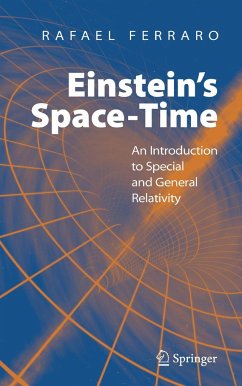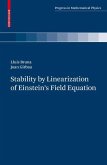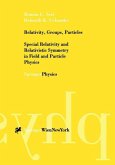Between 1994 and 1999, I had the pleasure of lecturing Special and General Relativity in the Facultad de Ciencias Exactas y Naturales of the Universidad de Buenos Aires. These lectures were targeted to undergraduate and graduate students of Physics. However, it is increasingly apparent that interest in Relativity extends beyond these academic circles. Because of this reason, this book intends to become useful to students of related disciplines and to other readers interested in Einstein's work, who will be able to incorporate entirely the fundamental ideas of Relativity starting from the very basic concepts of Physics. To understand the Theory of Relativity it is necessary to give up our intuitive notions of space and time, i. e. , the notions used in our daily relation with the world. These classical notions of space and time are also the foundations of Newtonian mechanics, which dominated Physics for over two centuries until they clashed with Maxwell's electromagnetism. Classical physics assumed that space is immutable and its geometry obeys the Euclidean postulates. Furthermore, distances and time intervals are believed invariant, i. e. , independent of the state of motion. Both preconceptions about the nature of space and time rely firmly on our daily experience, in such a way that the classical notions are imprinted in our thought with the status of "true.
From the reviews: "This is an extraordinarily thorough and compact primer on special and general relativity written and translated from the Spanish by astrophysicist Ferraro (Institute of Astronomy and Space Physics, Universidad de Buenos Aires). It is a remarkable resource for intermediate and advanced undergraduates, as it introduces the more difficult mathematics with a minimum of formalism. ... Summing Up: Highly recommended. Lower-division undergraduates through faculty." (P. D. Skiff, CHOICE, Vol. 45 (5), January, 2008) "The author succeeds in his undertaking to present the special theory of relativity and a brief introduction to general relativity ... . The style of the book is fresh and the author, paying attention to details, tries also to explain the material in his own words ... . the pedagogical approach is the strength of this book by Ferraro. ... suitable for readers who just want to get acquainted with the subject. The inclusion of the cosmological constant into the discussion seems timely." (Marek Nowakowski, Mathematical Reviews, Issue 2008 k) "Ferraro gives a solid treatment of Special Relativity. ... the book meets its aim to serve students following an introductory course on Relativity ... . I consider the historical approach to be a plus for this overall sound text on Relativity." (Sylvia Wenmackers, Physicalia Magazine, Vol. 30 (4), 2008) "In this 310-page text with 5 appendices there are 149 references in addition to 22 cited papers, 11 complements, 108 figures ... . Plenty of derivations, explanations, margin and foot notes here make the whole book extremely purposeful and study friendly for any earnest seeker of inspired factual knowledge of the fundamental aspects of the relativity theories which are undoubtedly of great importance to all. The work can quite effectively serve as a valuable text book for the students and the researchers ... ." (Paninjukunnath Achuthan, Zentralblatt MATH, Vol. 1157, 2009)








